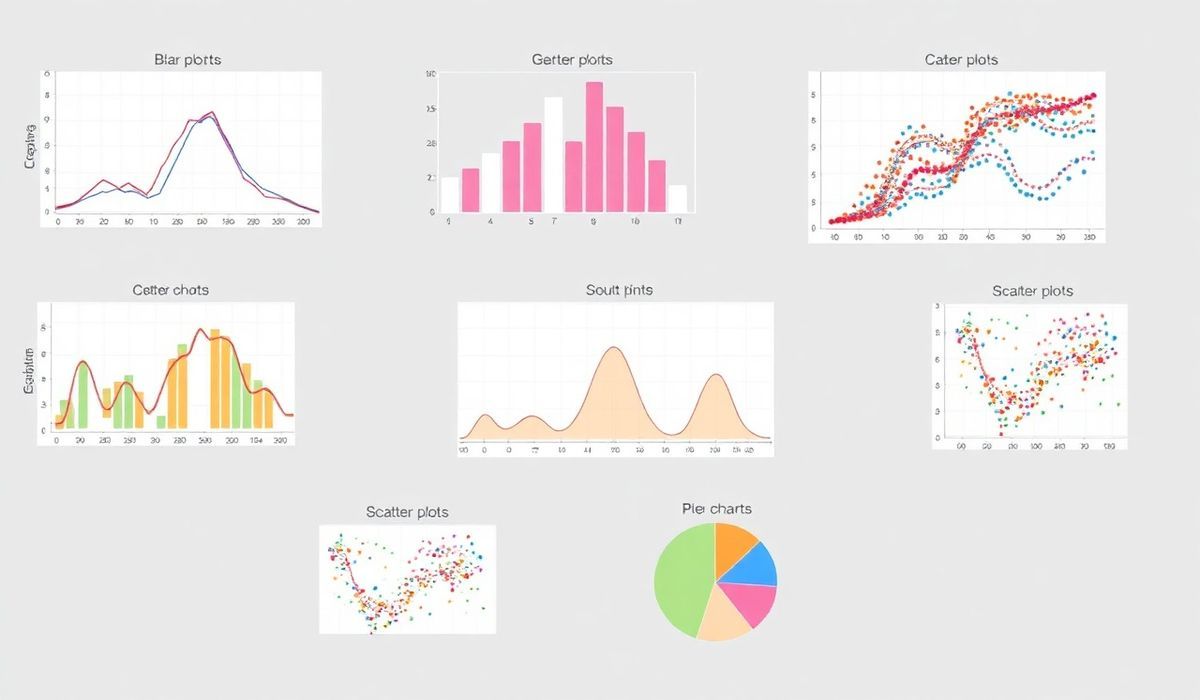A Comprehensive Guide to NLTK: Introduction, API Explanations, and a Generic Application
Natural Language Processing (NLP) enables machines to understand, interpret, and respond to human language in all its forms. One of the most popular Python libraries for NLP is NLTK, short for Natural Language Toolkit. In this blog post, we will explore an introduction to NLTK, dive into at least 20 useful APIs with code snippets, and create a simple generic application that demonstrates the power of NLTK.
1. NLTK Introduction
What is NLTK?
NLTK is a Python library built to work with human language data and build robust natural language processing pipelines. Developed by Steven Bird and Edward Loper, it is one of the most long-standing libraries for text analysis and NLP in Python.
Key Features of NLTK:
- Pre-packaged corpora and datasets for linguistic analysis.
- Tokenization of words and sentences.
- Part-of-Speech tagging and Named Entity Recognition (NER).
- Stemming and Lemmatization tools to process root words.
- Syntactic parsing capabilities.
- Support for machine-learning-based text classification.
- Compatibility with multiple text formats (plain text, JSON, XML, etc.).
Installation
NLTK can be installed with pip. If you haven’t already, install it via:
pip install nltk
Additionally, some datasets and resources need to be downloaded separately using:
import nltk nltk.download()
A Quick Example of What NLTK Can Do
import nltk
from nltk.tokenize import word_tokenize
text = "NLTK makes NLP easy and efficient with its advanced tools."
nltk.download('punkt')
tokens = word_tokenize(text)
print(tokens)
# Output: ['NLTK', 'makes', 'NLP', 'easy', 'and', 'efficient', 'with', 'its', 'advanced', 'tools', '.']
Now that you’re familiar with its fundamentals, let’s explore some of NLTK’s APIs.
2. NLTK API Explanations (with Code Snippets)
Below is a list of at least 20 NLTK APIs you can use for different NLP tasks. Each example demonstrates its functionality.
1. Tokenization (nltk.tokenize)
Splits a large text into sentences or individual words.
from nltk.tokenize import sent_tokenize, word_tokenize
text = "I love programming. NLTK is great for NLP tasks!"
nltk.download('punkt')
# Sentence Tokenization
sentences = sent_tokenize(text)
print("Sentences:", sentences)
# Word Tokenization
words = word_tokenize(text)
print("Words:", words)
2. Stopword Filtering (nltk.corpus.stopwords)
Filters common stopwords like “the”, “is”, “and”, etc. from text.
from nltk.corpus import stopwords
from nltk.tokenize import word_tokenize
nltk.download('stopwords')
nltk.download('punkt')
text = "NLTK provides modules for text preprocessing and NLP."
stop_words = set(stopwords.words('english'))
words = word_tokenize(text)
filtered_words = [word for word in words if word.lower() not in stop_words]
print("Filtered Words:", filtered_words)
3. Stemming (PorterStemmer)
Stemming reduces words to their root or base forms.
from nltk.stem import PorterStemmer
from nltk.tokenize import word_tokenize
text = "running runner runs faster"
ps = PorterStemmer()
words = word_tokenize(text)
stemmed_words = [ps.stem(word) for word in words]
print("Stemmed Words:", stemmed_words)
4. Lemmatization (WordNetLemmatizer)
Lemmatization maps words to their dictionary base forms using linguistic context.
from nltk.stem import WordNetLemmatizer
from nltk.tokenize import word_tokenize
nltk.download('wordnet')
lemmatizer = WordNetLemmatizer()
text = "running ran runs"
words = word_tokenize(text)
lemmatized_words = [lemmatizer.lemmatize(word, pos='v') for word in words]
print("Lemmatized Words:", lemmatized_words)
5. POS Tagging (nltk.pos_tag)
Part-of-speech (POS) tagging assigns word types like noun, verb, adjective, etc.
from nltk import pos_tag
from nltk.tokenize import word_tokenize
nltk.download('averaged_perceptron_tagger')
text = "NLTK is amazing!"
words = word_tokenize(text)
tags = pos_tag(words)
print("POS Tags:", tags)
6. Named Entity Recognition (NER)
Extracts named entities, such as locations, organizations, and dates.
from nltk import pos_tag, ne_chunk, word_tokenize
nltk.download('maxent_ne_chunker')
nltk.download('words')
text = "Barack Obama was the president of the United States."
tags = pos_tag(word_tokenize(text))
entities = ne_chunk(tags)
print("Named Entities:", entities)
7. Frequency Distribution (FreqDist)
Analyzes word frequencies in a text.
from nltk import FreqDist
from nltk.tokenize import word_tokenize
text = "NLTK makes NLP very engaging and useful. NLP is amazing."
words = word_tokenize(text)
fdist = FreqDist(words)
print("Most Common Words:", fdist.most_common(3))
8. n-Grams (nltk.ngrams)
Extracts n-grams (contiguous sequences of n items) from a text.
from nltk import ngrams
from nltk.tokenize import word_tokenize
text = "NLTK makes NLP very engaging."
words = word_tokenize(text)
bigrams = list(ngrams(words, 2))
print("Bigrams:", bigrams)
9. Concordance Query (nltk.Text)
Finds words in context from a large corpus.
from nltk.text import Text
from nltk.tokenize import word_tokenize
text = word_tokenize("NLTK makes text analysis easy and NLP insightful.")
text_obj = Text(text)
# Concordance
text_obj.concordance("NLTK")
10. WordNet Synonyms (nltk.corpus.wordnet)
Generates synonyms using WordNet.
from nltk.corpus import wordnet
nltk.download('wordnet')
synonyms = wordnet.synsets("happy")
print("Synonyms:", [syn.lemmas()[0].name() for syn in synonyms])
The above demonstrates just a fraction of NLTK’s powerful APIs. Other APIs include WordNet Antonyms, Sentiment Analysis (Advanced), Chunk Parsing, etc.
3. A Generic Application Using NLTK
Let’s build a simple Text Analyzer application that processes input text and displays its most useful insights.
import nltk
from nltk.tokenize import word_tokenize, sent_tokenize
from nltk.corpus import stopwords
from nltk.probability import FreqDist
from nltk.stem import WordNetLemmatizer, PorterStemmer
nltk.download('punkt')
nltk.download('stopwords')
nltk.download('wordnet')
def text_analyzer(text):
# Tokenization
words = word_tokenize(text)
sentences = sent_tokenize(text)
# Stopword Removal
stop_words = set(stopwords.words('english'))
filtered_words = [word for word in words if word.isalnum() and word.lower() not in stop_words]
# Word Frequency
fdist = FreqDist(filtered_words)
# Stemming and Lemmatization
ps = PorterStemmer()
lemmatizer = WordNetLemmatizer()
stemmed_words = [ps.stem(word) for word in filtered_words]
lemmatized_words = [lemmatizer.lemmatize(word) for word in filtered_words]
# Results
print("Original Text:", text)
print("\nTokenized Sentences:", sentences)
print("\nFiltered Words:", filtered_words)
print("\nWord Frequency:", fdist.most_common(5))
print("\nStemmed Words:", stemmed_words)
print("\nLemmatized Words:", lemmatized_words)
# Run the application
text = "Natural Language Toolkit, or NLTK, is an essential library for NLP. It makes text preprocessing easy."
text_analyzer(text)
Conclusion
NLTK is a rich library that powers many NLP projects with its vast resources and tools. Whether you’re cleaning text, performing analysis, or building machine learning pipelines, NLTK provides simple yet powerful utilities to work with human language data. We explored its fundamentals, APIs, and even built a generic text analysis application. The possibilities with NLTK are endless!




